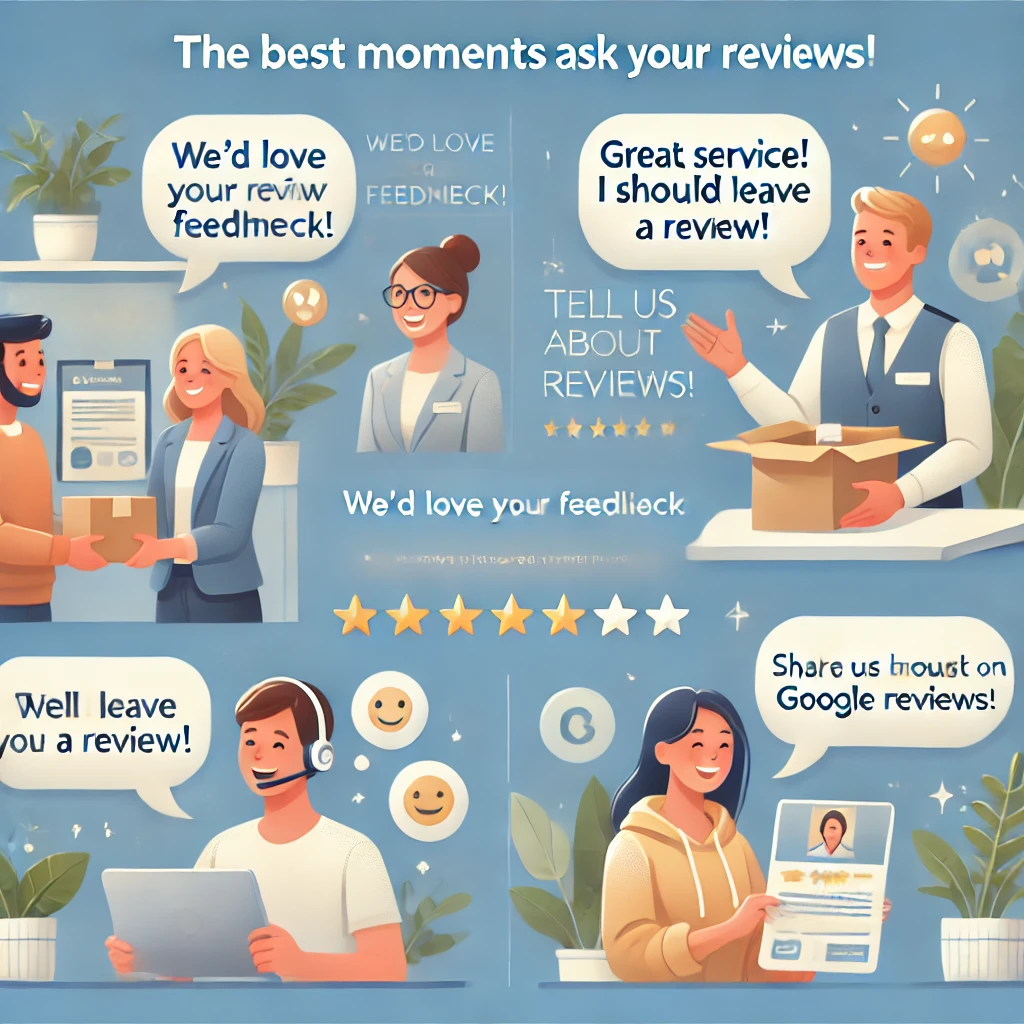Asking for customer reviews is a crucial strategy for small businesses to build their reputation, attract new customers, and improve their services. However, timing is everything when it comes to soliciting feedback. This article will explore the optimal moments for small businesses to request reviews, ensuring the best possible outcomes.
The Importance of Timing
Timing plays a vital role in the success of review requests. Asking at the right moment can significantly increase the likelihood of receiving positive, detailed feedback that can benefit your business.
The Sweet Spot: 10-14 Days After Purchase
Research suggests that waiting approximately 10-14 days after a purchase or service completion is often ideal for requesting reviews. This timeframe allows customers to fully experience the product or service while the interaction is still fresh in their minds. Studies conducted in South Korea found that businesses received significantly more reviews when they asked customers after the 13- to 14-day mark, compared to immediate requests.
Immediate Post-Service Opportunities
For service-based businesses, the optimal time to ask for a review can be immediately after the service is completed. This is particularly effective when:
- The client expresses satisfaction or gratitude
- The service has produced visible results
- The interaction has been notably positive
In these scenarios, the customer’s enthusiasm is at its peak, making them more likely to leave a glowing review.
Specific Timing Strategies
For Product-Based Businesses
If you sell physical products, consider these timing strategies:
- One to Two Weeks After Purchase: This allows customers time to use and evaluate the product.
- After Repeat Purchases: Loyal customers who make multiple purchases are often more inclined to leave positive reviews.
- Following a Positive Customer Service Interaction: If a customer reaches out with a question and receives helpful assistance, this can be an excellent time to request a review.
For Service-Based Businesses
Service providers should consider these opportune moments:
- Immediately After Service Completion: When the positive experience is fresh in the customer’s mind.
- During Follow-Up Communications: A few days after the service, when checking in on customer satisfaction.
- At the Point of Sale: For businesses with physical locations, asking for reviews during checkout can be effective.
Best Practices for Asking for Reviews
1. Gauge Customer Satisfaction First
Before asking for a review, ensure the customer has had a positive experience. This can be done through a quick satisfaction survey or a casual conversation
2. Make It Easy
Minimize friction in the review process. Provide direct links to your preferred review platforms and clear instructions on how to leave a review
3. Personalize Your Request
Tailor your review request to the individual customer and their specific experience with your business. This personal touch can increase the likelihood of a response
4. Use Multiple Channels
Diversify your approach by asking for reviews through various channels:
- In-person requests
- Email follow-ups
- SMS messages
- Social media outreach
5. Automate the Process
Consider using tools that automate review requests, such as sending an email or SMS a set number of days after a purchase or service completion
Avoiding Common Pitfalls
- Don’t Ask Too Early: Requesting a review immediately after a purchase, especially for products that require time to evaluate, can lead to lower response rates or less detailed feedback.
- Avoid Overwhelming Customers: While asking for reviews is essential, be careful not to bombard customers with requests. This can lead to annoyance and potentially harm your relationship with them.
- Never Incentivize Reviews: Offering incentives for reviews is against the policies of many review platforms and can undermine the authenticity of your feedback.
Conclusion
The key to successfully gathering customer reviews lies in understanding your business model, your customers’ journey, and the most impactful moments to make your request. By following these guidelines and continuously refining your approach, small businesses can build a robust collection of authentic, positive reviews that will help attract new customers and grow their reputation.
Remember, the ultimate goal is not just to accumulate reviews, but to use this feedback to improve your products, services, and overall customer experience. By doing so, you’ll create a virtuous cycle of satisfied customers, positive reviews, and business growth.

